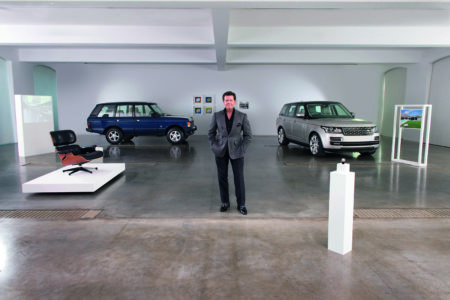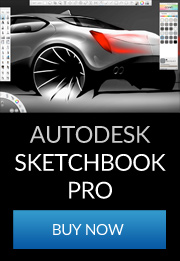| Reference |
Title |
| 70/156/EEC |
Type-approval of motor vehicles and their trailers |
| 70/157/EEC |
Permissible sound level and the exhaust system of motor vehicles |
| 70/220/EEC |
Measures to be taken against air pollution by emissions from motor vehicles |
| 70/221/EEC |
Liquid fuel tanks and rear protective devices for motor vehicles and their trailers |
| 70/222/EEC |
Space for mounting and the fixing of rear registration plates on motor vehicles and their trailers |
| 70/311/EEC |
Steering equipment for motor vehicles and their trailers |
| 70/387/EEC |
Doors of motor vehicles and their trailers |
| 70/388/EEC |
Audible warning devices for motor vehicles |
| 71/127/EEC |
Rear-view mirrors of motor vehicles |
| 71/320/EEC |
Braking devices of certain categories of motor vehicles and their trailers |
| 72/245/EEC |
Radio interference (electromagnetic compatibility) of vehicles |
| 72/306/EEC |
Measures to be taken against the emission of pollutants from diesel engines for use in vehicles |
| 73/350/EEC |
Adaptation of Directive 70/157/EEC |
| 74/60/EEC |
Interior fittings of motor vehicles (interior parts of the passenger compartment other than the interior rear-view mirrors, layout of controls, the roof or sliding roof, the backrest and rear part of seats) |
| 74/61/EEC |
Devices to prevent the unauthorized use of motor vehicles |
| 74/132/EEC |
Adaptation of Directive 71/320/EEC |
| 74/290/EEC |
Adaptation of Directive 70/220/EEC |
| 74/297/EEC |
Interior fittings of motor vehicles (the behaviour of the steering mechanism in the event of an impact) |
| 74/408/EEC |
Seats, anchorages and head restraints of motor vehicles |
| 74/483/EEC |
External projections of motor vehicles |
| 75/443/EEC |
Reverse and speedometer of motor vehicles |
| 75/524/EEC |
Adaptation of Directive 71/320/EEC |
| 76/114/EEC |
Statutory plates and inscriptions for motor vehicles and their trailers, and their location and method of attachment |
| 76/115/EEC |
Anchorages for motor vehicle safety belts |
| 76/756/EEC |
Installation of lighting and light-signalling devices on motor vehicles and their trailers |
| 76/757/EEC |
Reflex reflectors for motor vehicles and their trailers |
| 76/758/EEC |
End-outline marker lamps, front position (side) lamps, rear position (side) lamps, stop lamps, daytime running lamps and side marker lamps for motor vehicles and their trailers |
| 76/759/EEC |
Direction indicator lamps for motor vehicles and their trailers |
| 76/760/EEC |
Rear registration plate lamps for motor vehicles and their trailers |
| 76/761/EEC |
Motor vehicle headlamps which function as main-beam and/or dipped-beam headlamps and incandescent electric filament lamps for such headlamps |
| 76/762/EEC |
Front fog lamps for motor vehicles and filament lamps for such lamps |
| 77/102/EEC |
Adaptation of Directive 70/220/EEC |
| 77/212/EEC |
Amendment of Directive 70/157/EEC |
| 77/389/EEC |
Motor vehicle towing devices |
| 77/538/EEC |
Rear fog lamps for motor vehicles and their trailers |
| 77/539/EEC |
Reversing lamps for motor vehicles and their trailers |
| 77/540/EEC |
Parking lamps for motor vehicles |
| 77/541/EEC |
Safety belts and restraint systems of motor vehicles |
| 77/649/EEC |
Field of vision of motor vehicle drivers |
| 78/315/EEC |
Amendment of Directive 70/156/EEC |
| 78/316/EEC |
Interior fittings of motor vehicles (identification of controls, tell-tales and indicators) |
| 78/317/EEC |
Defrosting and demisting systems of glazed surfaces of motor vehicles |
| 78/318/EEC |
Wiper and washer systems of motor vehicles |
| 78/507/EEC |
Adaptation of Directive 76/114/EEC |
| 78/547/EEC |
Amendment of Directive 70/156/EEC |
| 78/548/EEC |
Heating systems for the passenger compartment of motor vehicles |
| 78/549/EEC |
Wheel guards of motor vehicles |
| 78/632/EEC |
Adaptation of Directive 74/60/EEC |
| 78/665/EEC |
Adaptation of Directive 70/220/EEC |
| 78/932/EEC |
Head restraints of seats of motor vehicles |
| 79/488/EEC |
Adaptation of Directive 74/483/EEC |
| 79/489/EEC |
Adaptation of Directive 71/320/EEC |
| 79/490/EEC |
Adaptation of Directive 70/221/EEC |
| 79/795/EEC |
Adaptation of Directive 71/127/EEC |
| 80/233/EEC |
Adaptation of Directive 76/756/EEC |
| 80/1267/EEC |
Amendment of Directive 70/156/EEC |
| 80/1268/EEC |
Fuel consumption of motor vehicles |
| 80/1269/EEC |
Engine power of motor vehicles |
| 81/333/EEC |
Adaptation of Directive 70/221/EEC |
| 81/334/EEC |
Adaptation of Directive 70/157/EEC |
| 81/575/EEC |
Amendment of Directive 76/115/EEC |
| 81/576/EEC |
Amendment of Directive 77/541/EEC |
| 81/577/EEC |
Amendment of Directive 74/408/EEC |
| 81/643/EEC |
Adaptation of Directive 77/649/EEC |
| 82/244/EEC |
Adaptation of Directive 76/756/EEC |
| 82/318/EEC |
Adaptation of Directive 76/115/EEC |
| 82/319/EEC |
Adaptation of Directive 77/541/EEC |
| 83/276/EEC |
Amendment of Directive 76/756/EEC |
| 83/351/EEC |
Amendment of Directive 70/220/EEC |
| 84/8/EEC |
Adaptation of Directive 76/756/EEC |
| 84/372/EEC |
Adaptation of Directive 70/157/EEC |
| 84/424/EEC |
Amendment of Directive 70/157/EEC |
| 85/205/EEC |
Adaptation of Directive 71/127/EEC |
| 85/647/EEC |
Adaptation of Directive 71/320/EEC |
| 86/562/EEC |
Adaptation of Directive 71/127/EEC |
| 87/358/EEC |
Amendment of Directive 70/156/EEC |
| 87/403/EEC |
Amendment of Directive 70/156/EEC |
| 88/76/EEC |
Amendment of Directive 70/220/EEC |
| 88/77/EEC |
Measures to be taken against the emission of gaseous and particulate pollutants from compression-ignition engines for use in vehicles, and the emission of gaseous pollutants from positive-ignition engines fuelled with natural gas or liquefied petroleum gas for use in vehicles |
| 88/194/EEC |
Adaptation of Directive 71/320/EEC |
| 88/195/EEC |
Adaptation of Directive 80/1269/EEC |
| 88/321/EEC |
Adaptation of Directive 71/127/EEC |
| 88/366/EEC |
Adaptation of Directive 77/649/EEC |
| 88/436/EEC |
Amendment of Directive 70/220/EEC |
| 89/277/EEC |
Adaptation of Directive 76/759/EEC |
| 89/278/EEC |
Adaptation of Directive 76/756/EEC |
| 89/297/EEC |
Lateral protection (side guards) of certain motor vehicles and their trailers |
| 89/458/EEC |
Amendment of Directive 70/220/EEC |
| 89/491/EEC |
Adaptation of Directives 70/157/EEC, 70/220/EEC, 72/245/EEC, 72/306/EEC, 80/1268/EEC and 80/1269/EEC |
| 89/516/EEC |
Adaptation of Directive 76/758/EEC |
| 89/517/EEC |
Adaptation of Directive 76/761/EEC |
| 89/518/EEC |
Adaptation of Directive 77/538/EEC |
| 90/628/EEC |
Adaptation of Directive 77/541/EEC |
| 90/629/EEC |
Adaptation of Directive 76/115/EEC |
| 90/630/EEC |
Adaptation of Directive 77/649/EEC |
| 91/226/EEC |
Spray-suppression systems of certain categories of motor vehicles and their trailers |
| 91/422/EEC |
Adaptation of Directive 71/320/EEC |
| 91/441/EEC |
Amendment of Directive 70/220/EEC |
| 91/542/EEC |
Amendment of Directive 88/77/EEC |
| 91/662/EEC |
Adaptation of Directive 74/297/EEC |
| 91/663/EEC |
Adaptation of Directive 76/756/EEC |
| 92/21/EEC |
Masses and dimensions of motor vehicles of category M1 |
| 92/22/EEC |
Safety glazing and glazing materials on motor vehicles and their trailers |
| 92/23/EEC |
Tyres for motor vehicles and their trailers and their fitting |
| 92/24/EEC |
Speed limitation devices or similar speed limitation on-board systems of certain categories of motor vehicles |
| 92/53/EEC |
Amendment of Directive 70/156/EEC |
| 92/62/EEC |
Adaptation of Directive 70/311/EEC |
| 92/97/EEC |
Amendment of Directive 70/157/EEC |
| 92/114/EEC |
External projections forward of the cab’s rear panel of motor vehicles of category N |
| 93/59/EEC |
Amendment of Directive 70/220/EEC |
| 93/81/EEC |
Adaptation of Directive 70/156/EEC |
| 93/91/EEC |
Adaptation of Directive 78/316/EEC |
| 93/116/EC |
Adaptation of Directive 80/1268/EEC |
| 94/12/EC |
Amendment of Directive 70/220/EEC |
| 94/20/EC |
Mechanical coupling devices of motor vehicles and their trailers and their attachment to those vehicles |
| 94/53/CE |
Amendment of Directive 93/91/EEC |
| 94/68/EC |
Adaptation of Directive 78/318/EEC |
| 94/78/EC |
Adaptation of Directive 78/549/EEC |
| 95/28/EC |
Burning behaviour of materials used in interior construction of certain categories of motor vehicles |
| 95/48/EC |
Adaptation of Directive 92/21/EEC |
| 95/54/EC |
Adaptation of Directive 72/245/EEC and amendment of Directive 70/156/EEC |
| 95/56/EC |
Adaptation of Directive 74/61/EEC |
| 96/1/EC |
Amendment of Directive 88/77/EEC |
| 96/20/EC |
Adaptation of Directive 70/157/EEC |
| 96/27/EC |
Protection of occupants of motor vehicles in the event of a side impact and amendment of Directive 70/156/EEC |
| 96/36/EC |
Adaptation of Directive 77/541/EEC |
| 96/37/EC |
Adaptation of Directive 74/408/EEC |
| 96/38/EC |
Adaptation of Directive 76/115/EEC |
| 96/44/EC |
Adaptation of Directive 70/220/EEC |
| 96/64/EC |
Adaptation of Directive 77/389/EEC |
| 96/69/CE |
Amendment of Directive 70/220/EEC |
| 96/79/EC |
Protection of occupants of motor vehicles in the event of a frontal impact and amendment of Directive 70/156/EEC |
| 97/19/EC |
Adaptation of Directive 70/221/EEC |
| 97/20/EC |
Adaptation of Directive 72/306/EEC |
| 97/21/EC |
Adaptation of Directive 80/1269/EEC |
| 97/27/EC |
Masses and dimensions of certain categories of motor vehicles and their trailers and amendment of Directive 70/156/EEC |
| 97/28/EC |
Adaptation of Directive 76/756/EEC |
| 97/29/EC |
Adaptation of Directive 76/757/EEC |
| 97/30/EC |
Adaptation of Directive 76/758/EEC |
| 97/31/EC |
Adaptation of Directive 76/760/EEC |
| 97/32/EC |
Adaptation of Directive 77/539/EEC |
| 97/39/EC |
Adaptation of Directive 75/443/EEC |
| 98/12/EC |
Adaptation of Directive 71/320/EEC |
| 98/14/EC |
Adaptation of Directive 70/156/EEC |
| 98/69/EC |
Amendment of Directive 70/220/EEC |
| 98/77/EC |
Adaptation of Directive 70/220/EEC |
| 98/90/EC |
Adaptation of Directive 70/387/EEC |
| 98/91/EC |
Motor vehicles and their trailers intended for the transport of dangerous goods by road and amending Directive 70/156/EEC |
| 1999/7/EC |
Adaptation of Directive 70/311/EEC |
| 1999/14/EC |
Adaptation of Directive 77/538/EEC |
| 1999/15/EC |
Adaptation of Directive 76/759/EEC |
| 1999/16/EC |
Adaptation of Directive 77/540/EEC |
| 1999/17/EC |
Adaptation of Directive 76/761/EEC |
| 1999/18/EC |
Adaptation of Directive 76/762/EEC |
| 1999/96/EC |
Amendment of Directive 88/77/EEC |
| 1999/98/EC |
Adaptation of Directive 96/79/EC |
| 1999/99/EC |
Adaptation of Directive 80/1269/EEC |
| 1999/100/EC |
Adaptation of Directive 80/1268/EEC |
| 1999/101/EC |
Adaptation of Directive 70/157/EEC |
| 1999/102/EC |
Adaptation of Directive 70/220/EEC |
| 2000/3/EC |
Adaptation of Directive 77/541/EEC |
| 2000/4/EC |
Amendment of Directive 74/60/EEC |
| 2000/8/EC |
Amendment of Directive 70/221/EEC |
| 2000/40/EC |
The approximation of the laws of the Member States relating to the front underrun protection of motor vehicles and amending Council Directive 70/156/EEC |
| 2001/1/EC |
Amendment of Directive 70/220/EEC |
| 2001/27/EC |
Adaptation of Directive 88/77/EEC |
| 2001/31/EC |
Adaptation of Directive 70/387/EEC |
| 2001/43/EC |
Adaptation of Directive 92/23/EEC |
| 2001/56/EC |
Heating systems for motor vehicles and their trailers, amending Council Directive 70/156/EEC and repealing Council Directive 78/548/EEC |
| 2001/85/EC |
Special provisions for vehicles used for the carriage of passengers comprising more than eight seats in addition to the driver’s seat, and adaptation of Directive 70/156/EEC and 97/27/EC |
| 2001/92/EC |
Adaptation of Directive 92/22/EEC and 70/156/EEC |
| 2001/100/EC |
Amendment of Directive 70/220/EEC |
| 2001/116/EC |
Adaptation of Directive 70/156/EEC |
| 2002/78/EC |
Adaptation of Directive 71/320/EEC |
| 2002/80/EC |
Adaptation of Directive 70/220/EEC |
| 2003/19/EC |
Amendment of Directive 97/27/EEC |
| 2003/76/EC |
Amendment of Directive 70/220/EEC |
| 2003/97/EC |
Type-approval of devices for indirect vision and of vehicles equipped with these devices, amending Directive 70/156/EEC and repealing Directive 71/127/EEC |
| 2003/102/EC |
Protection of pedestrians and other vulnerable road users before and in the event of a collision with a motor vehicle and amending Directive 70/156/EEC |
| 2004/3/EC |
Amendment of Directives 70/156/EEC and 80/1268/EEC |
| 2004/11/EC |
Amendment of Directive 92/24/EEC |










